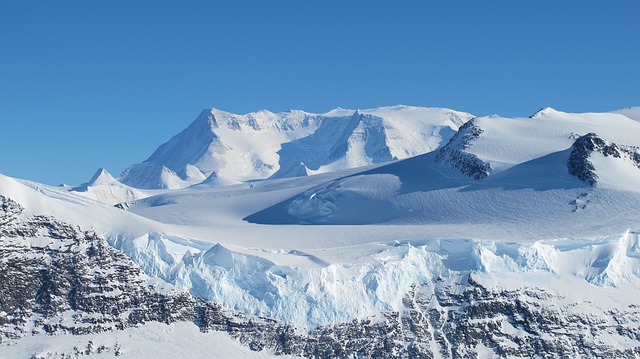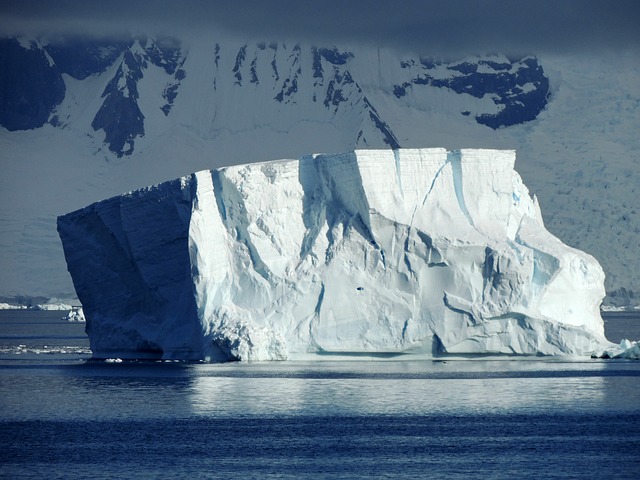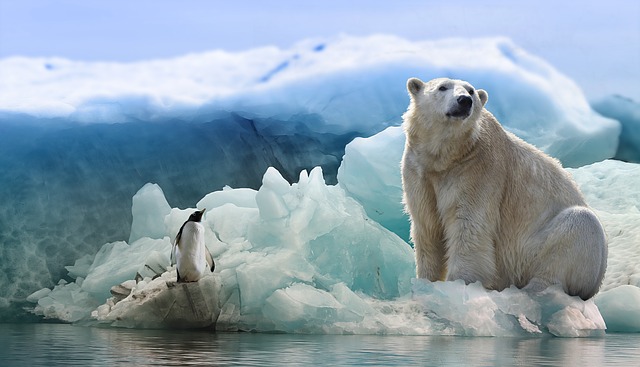
Antarctica : the melting ice sheet is alarming, here is everything you need to know
Once a part of Supercontinent Gondwana, Antarctica was as green as any tropical region where dinosaurs and other relative species roamed, it had green palm trees, reptiles and the lives too. Although we couldn’t capture the photographs of green Antarctica, the evidence does hold the clarification. Billions of years back Antarctica started breaking down and separated from the Supercontinent, leaving its fellows South America and Africa behind. Around 25 million years ago, Antarctica finally settled up at the South Pole, which is the present location. of Antartica.
Antarctica is the world largest ice sheet; it has the temperature of -60℃ in some region during winter and can go as high as 9℃ in summer. Despite severe weather and unbearable living conditions, Antarctica is not a lone Continent, it is a home of penguins, seals, whales, gulls, krill, albatross and some scientists and researchers too. It doesn’t hold any identity of having a native population, language, ethics, food or any domain, but there are few countries that claim some regions of its land.
Why does Antarctica matter?
Antarctica has a deep relationship and a vital role in Earth’s climate. It is the fifth-largest Continent and around 98% covered with ice which makes 90% of world’s ice and 70% of world’s freshwater (if we convert its ice into water, although we shouldn’t). The giant ice sheet helps in maintaining the heat balance (or energy balance). Earth atmosphere absorbs and reflects the heat it gets from the Sun. Earth’s white sheet acts as a reflector that reflects the heat received from Sun back to space and helps to keep it cool. It is helping Earth to maintain its normal temperature and tackling the current situation of global warming.
Problems with the melting ice sheet
There are two major problems with Antarctica’s melting ice, the first one is, if Antarctica loses its entire ice it will increase sea levels by 200 ft which will cause the coastal area to be submerged under the sea. And the second problem is, if all the ice melts, there will not be any heat reflector to maintain the heat balance, and that will raise the earth’s temperature. Ice sheets work as reflectors which reflects Sun’s heat back into space, but if the ice turns into the ocean, it will absorb more heat instead of reflecting.
Is Antarctica really terminating?

Data collected by a report says that Antarctica has lost as much ice in four years as the Arctic lost in 34 years. Although it is melting slowly than Arctic and Greenland, it contains a vast mass of ice than Both Arctic and Greenland combined. Since 1992 Antarctica has lost an average net of 65 million metric tons of ice a year. And since the 90s, Antarctica’s melting pace has accelerated by 5 times. Researches by NASA and other research stations have found the gigantic cracks in Antarctica land which shows the breaking of the ice sheet. Notably, some a small city sizes of ice layers have been seen floating separately in the Arctic ocean
Do we need to scare?

The one-word answer is a big YES. Antarctica has around 8 times more ice than Greenland and nearly 50 times more than all the world’s glaciers combined. If Antarctica loses its entire ice, half of the world will be submerged under the water. The rising level of ocean will wipe out Venice, Miami, New York, Mumbai, Chennai, Kolkata, Florida, Buenos Aires, coastal Uruguay, London, 600 million Chinese, entire Bangladesh and almost half of the world from our map. The modelling simulations indicated extensive ice loss would start in 600 years, but a report by NASA says it could happen sooner, even in next 200 to 600 years.
Another report by The Guardian says, if the ice melts with the current velocity, it will take Antarctica as much as 150 years to shed its ice completely even if the temperature stops rising. Due to lack of evidence and details, it is hard to find out the exact time, but one thing which can be engraved with certainty is the great loss of mankind and realm. The Thwaites glacier alone holds enough amount of ice to increase global sea levels by 50cm and if the West Antarctic ice sheet melts completely, it will raise the sea level by 16ft which will cause most of the coastal region submerged under the sea. Another thing that scares the scientists is the rise in the earth temperature we would face without this giant ice sheet. Increasing the sea levels might be less frightening, but the way the earth’s atmosphere would be affected is critical.
Read more: The Silent Killer: Plastic
Some fun facts about Antarctica
Although Antarctica has settled down at the far located poles and hard living conditions, there are impressive facts about it that can amaze anyone. Antarctica has a wide array of mountain ranges, and the highest mountain summit is about 4,500 meters high. The coldest temperature was measured -93.3 ℃ in 2010 by satellite data. Antarctica’s interior is believed to receive 50 to 100 millimetres (2-4 inches) of water (in the form of snow) every year.
Recently, NASA scientists have discovered more ice to be formed on some region of Antarctica due to drastic change in climate, but still, major parts are facing ice shedding. In the year 1984, a meteorite from Mars was found in Antarctica.
It has some research centres too, where US McMurdo station is the largest one with 80 buildings and a support team of 1,250, the centre is equipped with a firehouse, dormitories, stores, and the continent’s only ATM. Antarctica has become a tourist spot in the past decade, in 2010 around 40,000 people sailed to Antarctica, and it is the most expensive tourist destination in the world.
Have a news story, an interesting write-up or simply a suggestion? Write to us at info@oneworldnews.com








